Promoting Agroforestry
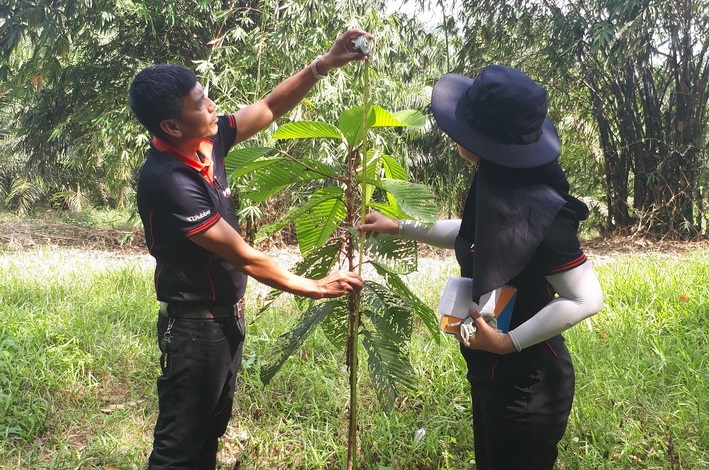
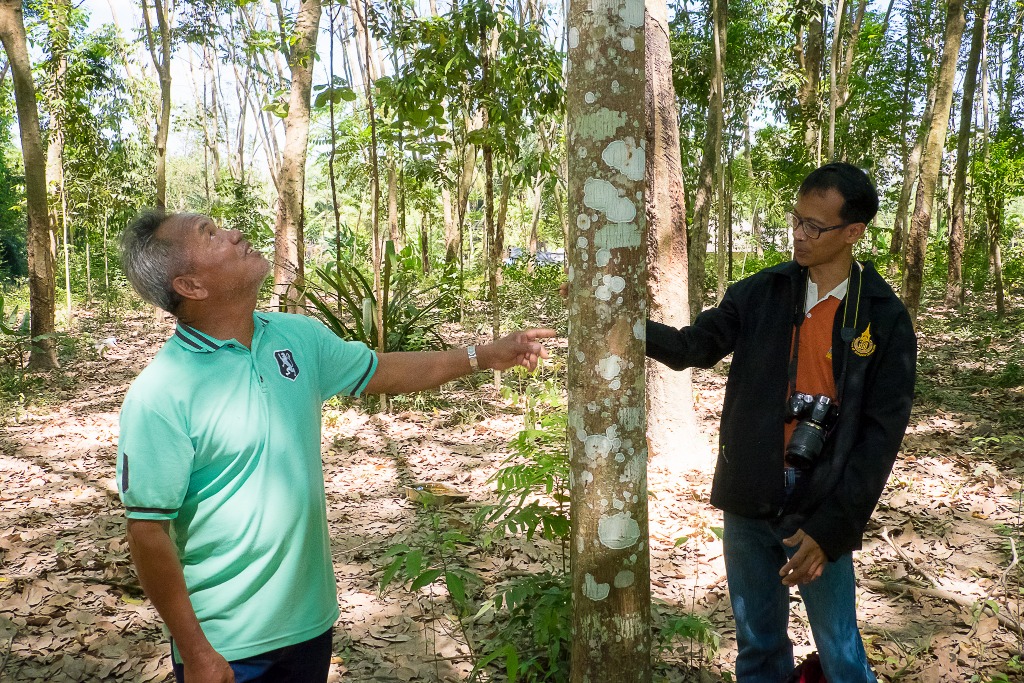
What is agroforestry?
Agroforestry is a coined term from the words agriculture and forestry, referring to grazing livestock and cultivating crops between planted trees. Yokohama Rubber is promoting agroforestry in natural rubber farms.
What it means to address agroforestry on natural rubber farms
Harvesting multiple types of crops such as fruits, herbs and wood in a natural rubber forest has many advantages, including a stable income and increased biodiversity in farms. In particular, natural rubber is only produced for about 20 to 25 years after planting trees, after which the production progressively declines. This makes replanting necessary to ensure efficient production. However, para rubber trees do not produce natural rubber for five to six years after they are planted. Due to the loss of income during this period, rubber farmers may delay replanting or abandon their natural rubber business. Agroforestry is also an effective means for them to produce natural rubber in a sustainable manner.
Expected benefits of agroforestry
In addition to providing a supplemental income when para rubber tree saplings are too young to produce latex, agroforestry provides the following benefits.
Natural rubber prices fluctuate greatly with the market. Even after natural rubber is ready to be harvested, various crops planted in the farm will help to stabilize the income of natural rubber farmers.
Rubber trees experience a period called “wintering” every year, when the leaves of all rubber trees fall off at the same time before new leaves start to grow. Since rubber trees drop few leaves at other times of the year, so once the leaves that fell off during the wintering period have been decomposed by insects and microorganisms, etc., there is nothing left to cover the soil surface, as the result of which the soil can become gradually drier. However, if a variety of different plants are planted together, the ground surface will always be covered with fallen leaves, which prevents the soil from getting dry. Decomposition fallen leaves also serve as fertilizer for the rubber trees, contributing to the reduction of production costs.
One of the diseases affecting rubber trees is called "white root disease (WRD)," the risk from which is considered to be highest in Southeast Asia. Once a rubber tree becomes infected with WRD, the disease can spread to other nearby trees very rapidly, and in the land where this happened, rubber trees cannot be planted for at least five years. Since natural rubber farms practicing agroforestry are growing a wide variety of different plant species, the range of microorganisms in the soil is much more complex, which is believed to contribute to fostering a WRD-resistant environment.
Another benefit of having multiple types of plants in a rubber plantation instead of practicing monoculture to plant only para rubber trees is that this increases the number of insects and birds that use such plants, which also results in enriched biodiversity.
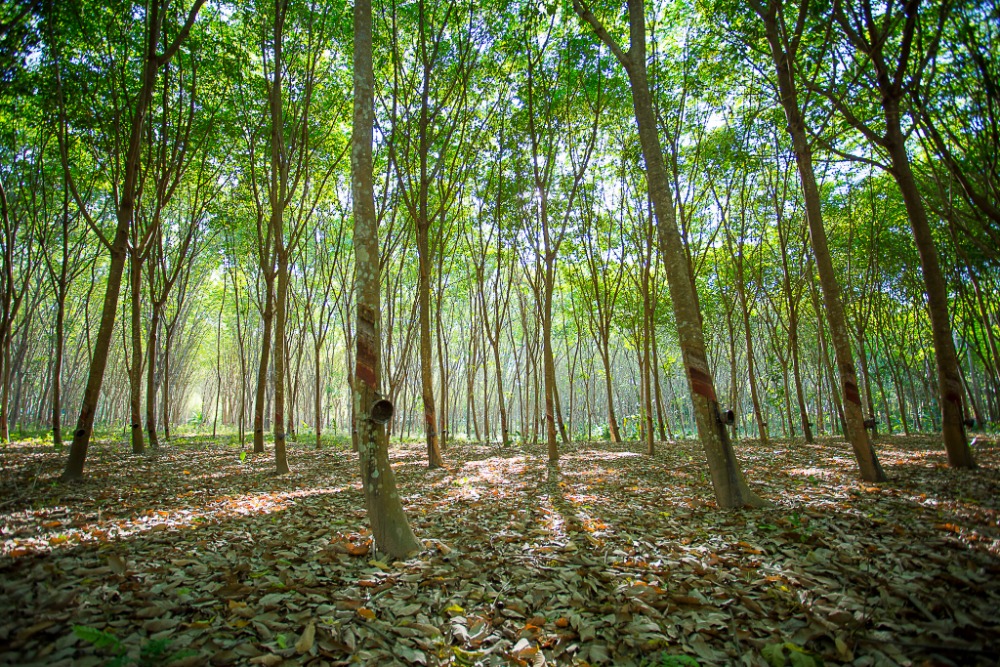
Natural rubber farm practicing monoculture
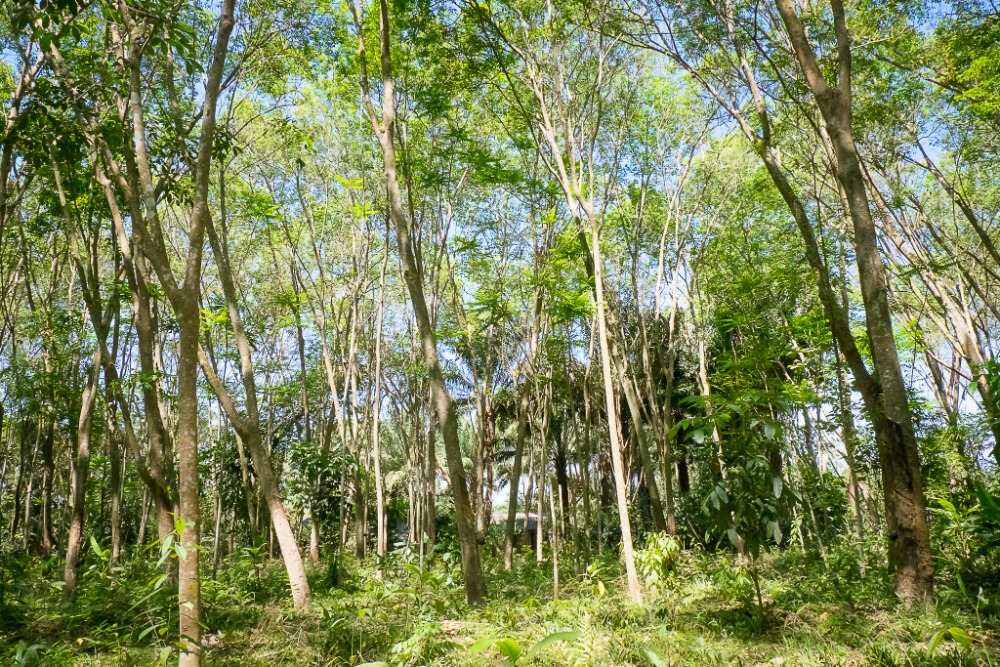
Natural rubber farm practicing agroforestry
Encounter with Professor Sara
Y.T. Rubber Co., Ltd. (YTRC), in collaboration with Professor Sara of the Prince of Songkla University, an expert in agroforestry, has provided training courses on agroforestry to natural rubber farmers in Surat Thani district, while acting as liaison bridge between Professor Sara and farmers, and providing training venues. A study by Professor Sara shows that agroforestry farms enjoyed both increased yield and income compared to those of ordinary natural rubber farms. Nevertheless, as the number of cases was still limited, YTRC is encouraging many farmers to adopt this method. When YTRC started this initiative in 2016, only 10 farms participated in the initiative with a total farm area being about 12 hectares; however, by the end of 2022, the number of participating farms had increased to as many as 57 with a total farm area about 170 hectares. We are planning to expand a total area of agroforestry farms to around 200 hectares by the end of 2030.
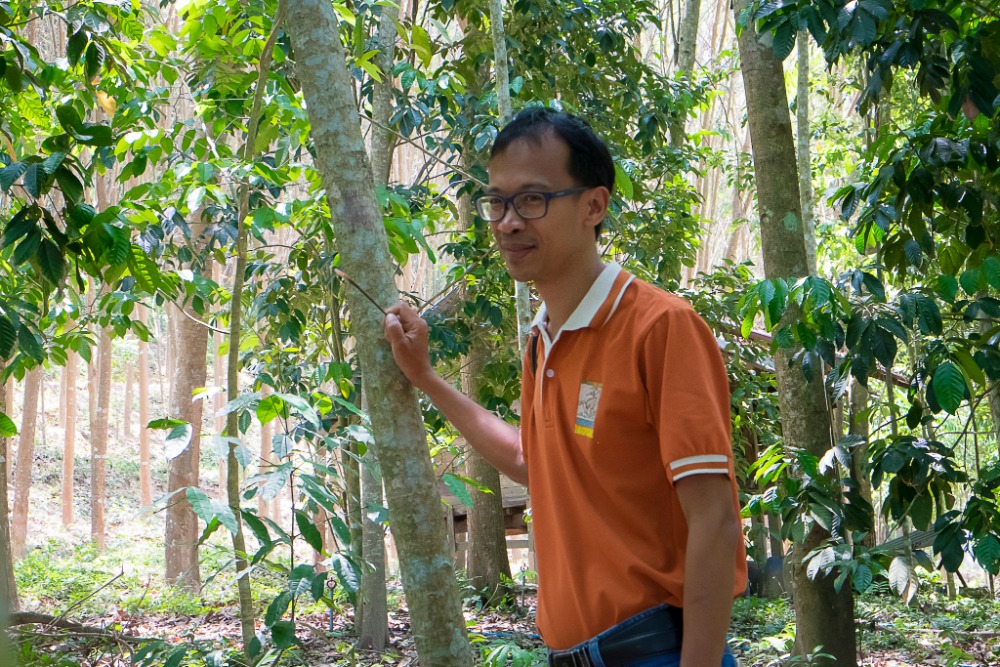
Professor Sara
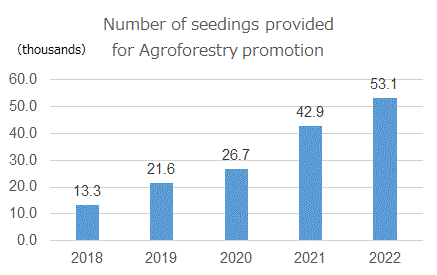
Saplings donated in 2022 totaled 10,220, for a cumulative total of 53.1 thousand saplings.
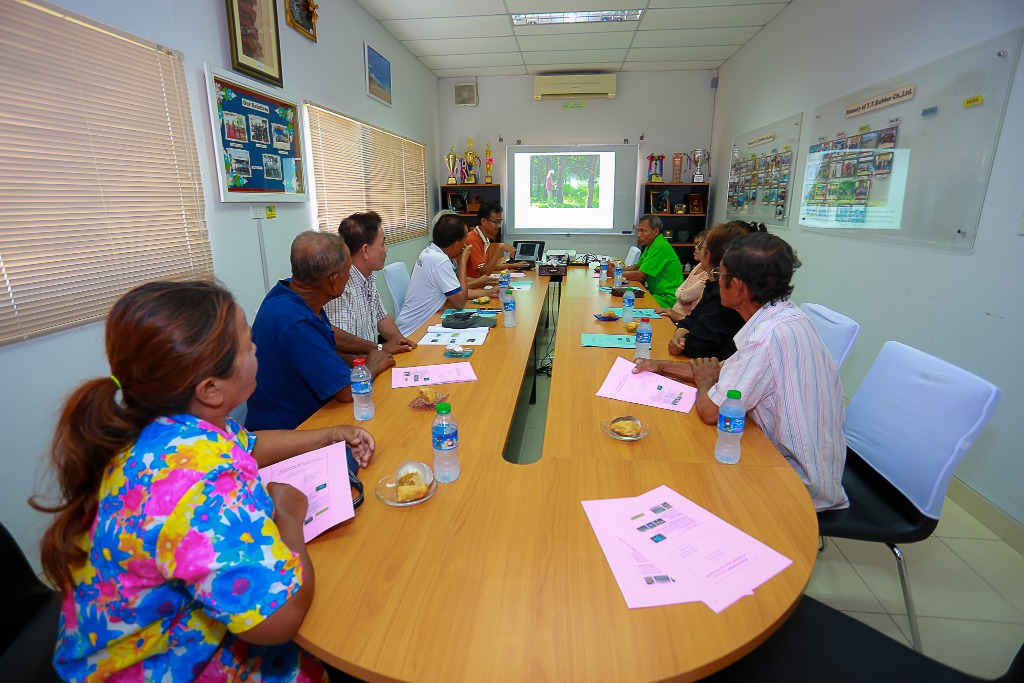
Agroforestry seminar
Voice of a farmer
Mr. Prajub Nuphet, running a natural rubber plantation
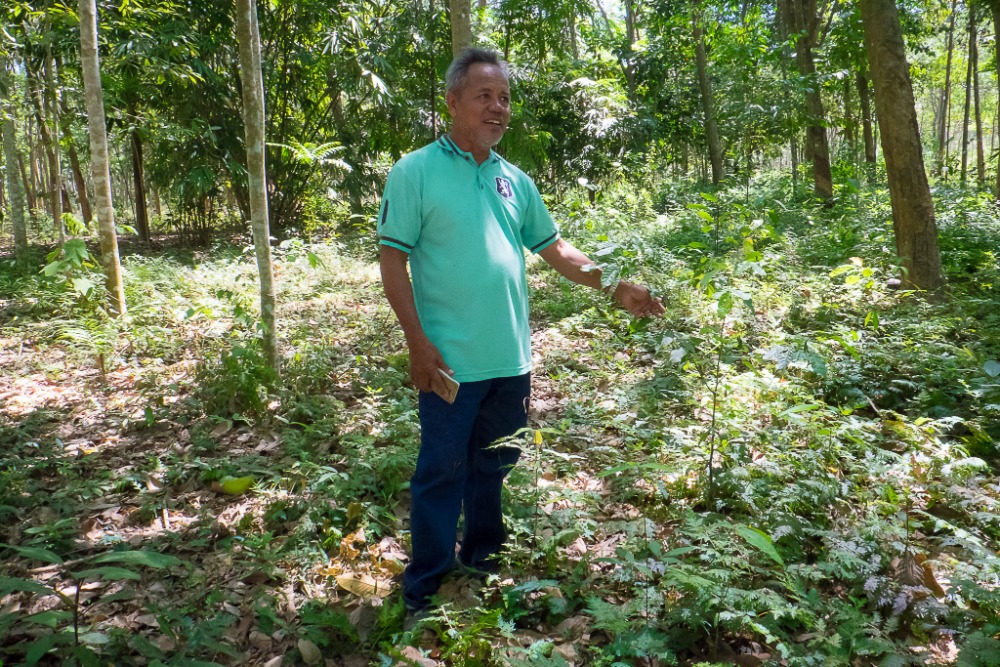
It is now eight years since I first started to apply the agroforestry approach in one corner of my natural rubber farm. When I first heard about agroforestry, I thought it was a really great agricultural technique. A few years after starting this method, I stopped using chemical fertilizer. I am growing plants that produce fruits and ones whose products are used to make spices, and tress for making furniture, etc. In addition to bringing in stable income, this makes me feel I'm doing something good for society, so I'm proud of taking this approach.
Over the past few years, rapid development in Surat Thani district has led to a decline in the number of wild animals. However, since I started implementing agroforestry, I find there has been a remarkable increase in the number of butterflies and other insects, wild birds, etc. on the farm. In addition, although we have very limited rainfall in Surat Thani district during the dry season, fallen leaves help to retain moisture, preventing the soil from drying out. I am very grateful to YTRC for providing saplings. Since there are many things that I don’t know about farming methods and market conditions of crops other than natural rubber, so it would be great if I could access this kind of information. In the future, I would like to grow a wider variety of crops, including coffee, vegetables, etc., and I hope to be an agroforestry expert and transform my farm into a learning center.
Future challenges and initiatives
We have just begun our efforts to make natural rubber a sustainable resource. There are a wide range of challenges ahead of us that need to be addressed, such as the formulation of international standards for natural rubber, the establishment of traceability, and the enhancement of dialogue and cooperation with natural rubber farmers.
Yokohama Rubber will continue to work toward achieving the SDGs by diligently addressing each of these challenges.


